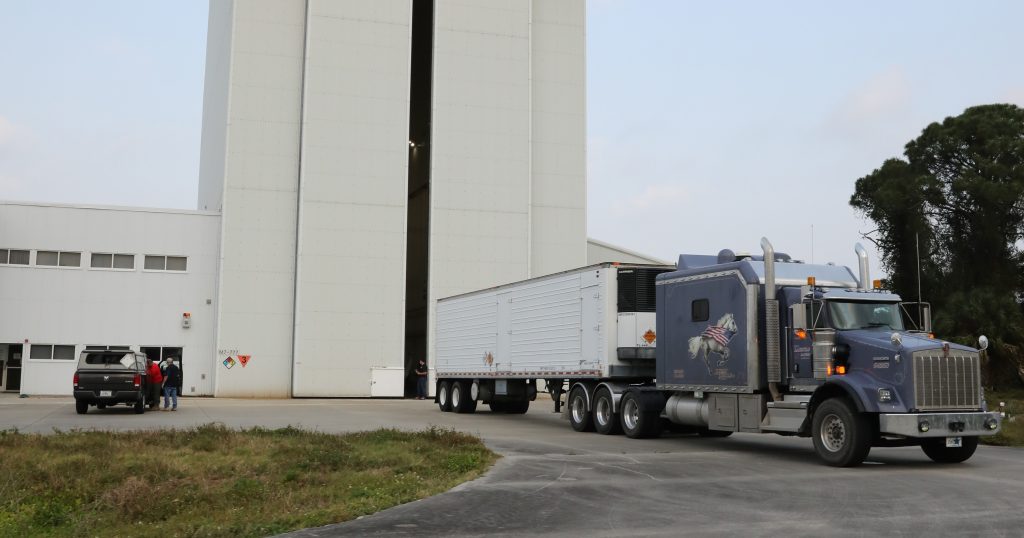
Kennedy Space Center has received a critical piece of hardware in support of the Artemis II crewed mission. The launch abort motor for Orion’s Launch Abort System (LAS) arrived in Florida April 13 from Northrop Grumman in Promontory, Utah, and was transported to the Launch Abort System Facility where it will undergo testing in preparation for use on the second Artemis mission.
The launch abort motor is one of three motors on the LAS and is capable of producing about 400,000 pounds of thrust to steer and pull the crew module away from the rocket. The attitude control motor and the jettison motor complete the trio of motors responsible for controlling the LAS.
The LAS weighs about 16,000 pounds and is installed on top of the Orion crew module. It is designed to protect astronauts in the unlikely event of an emergency during launch or ascent. The system pulls the spacecraft away from a falling rocket and reorients the crew module to provide a safe landing for the crew.
Under the Artemis program, NASA will land the first woman and next man on the Moon. Orion will launch atop the agency’s Space Launch System rocket to carry astronauts to space, provide emergency abort capability, sustain the crew during space travel, and provide safe re-entry from deep space return velocities. NASA will develop a sustainable presence at the Moon and apply knowledge gained to pave the way for human exploration of Mars.
